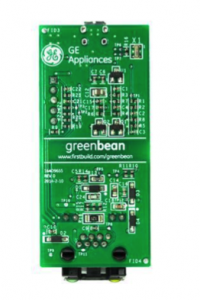 The following is a special contribution to this blog from CCC Chair Gregory Hager (Johns Hopkins University).
The following is a special contribution to this blog from CCC Chair Gregory Hager (Johns Hopkins University).
These days, there are daily prognostications about the world-changing implications of devices, computing, data, and networking interacting with the physical world – the internet of things, cyber-physical systems, robotics, agile manufacturing, smart infrastructure and a host of other sexy-tech terms.
There will be countless opportunities in this space, from home to factory floor to transportation and cities, and beyond. A vibrant entrepreneurial community has already formed around apps that connect and control home devices. GE has talked about how the Industrial Internet of Things will influence the factory floor, and they have more recently reported an open interface that lets you hack their appliances. Of course, Google’s acquisition of several robotics companies has people wondering about their interests, not to mention Amazon’s acquisition of Kiva Systems, and their very public interest in delivery drones. In short, the “world of virtual” is rapidly becoming physical.
What are the implications for the research community? A recent article in Computerworld notes that the White House has identified cyber-physical systems (CPS) as a “national priority” and then poses the question “What is the right amount of Government spending?” It goes on to cite a 2008 CCC white paper, co-authored by John Stankovic at UVA, which argued that the right number is at least twice what is currently spent.
To put this in perspective, the article notes that doubling CPS would be about $75M a year, but the EU is investing more than four times that amount to pursue “world leadership” in CPS, including funds from both public and private sources. The same is true in robotics — the NRI program, also initiated through a CCC effort, is investing around $40-50M/yr. By comparison, the EU recently announced the SPARC program which include €2.1B of funding over seven years, 1/3 public and 2/3 private.
So, there is the obvious message: we are at risk of falling behind without comparable research investments. There is no doubt that is true, and it has enormous implications for the long-term health of our innovation ecosystem.
But, there is another risk – namely neglecting to engage the broader computing research community in this rapidly expanding space. Future innovations in CPS, Internet of Things and Robotics will need more than neat new gadgets; it will depend crucially on advances in fundamental computer science. For example, how do we scale local ad-hoc networking to 100’s or thousands of devices? How do we guarantee modularity, timeliness, safety, and security in a world where we are immersed in sensors. How do we rethink modularity and composability for systems of physical devices? How do we interface with a world that teems with computing, observing, reacting to, and interacting with us at every moment?
So, while the hype may make it seem like we’re making a huge leap from the virtual world of information to the physical world of action, in fact, its really just a continuation of the expanding frontier of computing innovation that has transformed our society over the past decades. As such, the CCC welcomes your input and ideas on the how computing will impact our physical world. Help us to help you shape this exciting new frontier of computing research.









